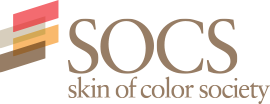COVID Awareness
Katie A. O’Connell, MS
What is COVID-19? How is it spread?
Coronavirus disease 2019, also known as COVID-19, is caused by the virus SARS-CoV-2. It is spread from person to person via droplets in the air. Droplets are released when a person talks, coughs, or sneezes.1 Anyone is at risk of becoming infected with COVID-19, however, different people may be affected to varying degrees.
COVID-19 Symptoms
Most individuals who develop symptoms will do so within 4-5 days of becoming infected. However, in some cases, symptoms may take up to 2 weeks to develop.2 Symptoms are non-specific and include fever, cough, difficulty breathing, fatigue, chills, muscle aches, loss of a sense of smell and/or taste, and headaches.1,2 Many of these symptoms may appear similar to seasonal influenza. It is important to contact a healthcare professional if you experience any of these symptoms. Your healthcare professional will be able to direct you towards the next best steps.
COVID-19 Testing
Testing should be done if a person exhibits the above symptoms of COVID-19, has been in close contact with a person testing positive for COVID-19 (close contact is defined as being within 6 feet of an infected person for a period greater than 15 minutes), or if your healthcare professional recommends you to take a test.2 There are several tests that can be done to confirm a diagnosis of COVID-19. The Centers for Disease Control and Prevention recommend any of the following:3
- Nasopharyngeal swab
- Nasal swab from both anterior nares or from nasal mid-turbinate
- Nasal or nasopharyngeal wash/aspirate
- Oropharyngeal swab
- Saliva specimen (1-5 mL)
COVID-19 Prevention Strategies
In order to prevent the spread of COVID-19 and protect yourself and your loved ones there are several important steps you can take.1
- 1. Wear a mask.
- 2. Wash your hands.
- 3. Follow social distancing protocols.
- 4. Get the COVID-19 vaccine.
Health and Social Inequities
Numerous studies have identified that racial and ethnic minority groups are being disproportionately affected by the current pandemic.5-11 Researchers believe this is due to a variety of factors related to long-standing health and social inequities.12 COVID-19 can have devastating outcomes in both the elderly and those with comorbid conditions including, but not limited to, cardiovascular disease, diabetes, chronic kidney disease, and chronic lung disease.5
Cutaneous Manifestations of COVID-19
Many different forms of cutaneous manifestations of COVID-19 have been documented in the literature.13 However, the majority of published literature on these cutaneous manifestations involves patients with lighter skin types.14 Recently, several authors have made an effort to provide clinical photos of COVID-19 skin symptoms in skin of color.15,16 One series identified seven patients with subtle findings on their toes and associated symptoms of swelling, pain, and itching.15 For some, this may be the only sign of COVID-19 infection.17 Please consult your healthcare provider if you or your loved ones develop new skin symptoms.
Other Resources:
CDC Website: https://www.cdc.gov/coronavirus/2019-ncov/index.html
CDC Vaccine Information: https://www.cdc.gov/coronavirus/2019-ncov/vaccines/index.html
CDC Health Equity and Coronavirus: https://www.cdc.gov/coronavirus/2019-ncov/community/health-equity/index.html
World Health Organization: https://www.who.int/health-topics/coronavirus#tab=tab_1
American Academy of Dermatology Coronavirus Resource Center: https://www.aad.org/public/diseases/coronavirus
National Institute of Health: https://www.nih.gov/coronavirus
Benefits.gov Coronavirus Resources: https://www.benefits.gov/help/faq/Coronavirus-resources
American Psychiatric Association Coronavirus Resources for families: https://www.psychiatry.org/psychiatrists/covid-19-coronavirus
Resources:
1. Patient education: Coronavirus disease 2019 (COVID-19) overview (The Basics). In: UpToDate, Crowley K (Ed), UpToDate, Waltham, MA. (Assessed on October 11, 2020).
2. Coronavirus (COVID-19). (2020). In: Centers for Disease Control and Prevention. Available from: https://www.cdc.gov/coronavirus/2019-ncov/index.html
3. Centers for Disease Control and Prevention. Interim Guidelines for Collecting, Handling, and Testing Clinical Specimens from Persons Under Investigation (PUIs) for Coronavirus Disease 2019 (COVID-19). https://www.cdc.gov/coronavirus/2019-nCoV/lab/guidelines-clinical-specimens.html (Accessed on October 15, 2020).
4. Hendrix MJ, Walde C, Findley K, Trotman R. Absence of Apparent Transmission of SARS-CoV-2 from Two Stylists After Exposure at a Hair Salon with a Universal Face Covering Policy — Springfield, Missouri, May 2020. MMWR Morb Mortal Wkly Rep 2020;69:930-932. DOI: http://dx.doi.org/10.15585/mmwr.mm6928e2external icon.
5. Stokes EK, Zambrano LD, Anderson KN, Marder EP, Raz KM, El Burai Felix S, Tie Y, Fullerton KE. Coronavirus Disease 2019 Case Surveillance – United States, January 22-May 30, 2020. MMWR Morb Mortal Wkly Rep. 2020 Jun 19;69(24):759-765. doi: 10.15585/mmwr.mm6924e2. PMID: 32555134; PMCID: PMC7302472.
6. Killerby ME, Link-Gelles R, Haight SC, Schrodt CA, England L, Gomes DJ, Shamout M, Pettrone K, O’Laughlin K, Kimball A, Blau EF, Burnett E, Ladva CN, Szablewski CM, Tobin-D’Angelo M, Oosmanally N, Drenzek C, Murphy DJ, Blum JM, Hollberg J, Lefkove B, Brown FW, Shimabukuro T, Midgley CM, Tate JE; CDC COVID-19 Response Clinical Team. Characteristics Associated with Hospitalization Among Patients with COVID-19 – Metropolitan Atlanta, Georgia, March-April 2020. MMWR Morb Mortal Wkly Rep. 2020 Jun 26;69(25):790-794. doi: 10.15585/mmwr.mm6925e1. PMID: 32584797; PMCID: PMC7316317.
7. Health Equity Considerations and Racial and Ethnic Minority Groups. (2020) In: Centers for Disease Control and Prevention. Available from: https://www.cdc.gov/coronavirus/2019-ncov/community/health-equity/race-ethnicity.html
8. Gold JAW, Wong KK, Szablewski CM, Patel PR, Rossow J, da Silva J, Natarajan P, Morris SB, Fanfair RN, Rogers-Brown J, Bruce BB, Browning SD, Hernandez-Romieu AC, Furukawa NW, Kang M, Evans ME, Oosmanally N, Tobin-D’Angelo M, Drenzek C, Murphy DJ, Hollberg J, Blum JM, Jansen R, Wright DW, Sewell WM 3rd, Owens JD, Lefkove B, Brown FW, Burton DC, Uyeki TM, Bialek SR, Jackson BR. Characteristics and Clinical Outcomes of Adult Patients Hospitalized with COVID-19 – Georgia, March 2020. MMWR Morb Mortal Wkly Rep. 2020 May 8;69(18):545-550. doi: 10.15585/mmwr.mm6918e1. PMID: 32379729.
9. Price-Haywood EG, Burton J, Fort D, Seoane L. Hospitalization and Mortality among Black Patients and White Patients with Covid-19. N Engl J Med. 2020 Jun 25;382(26):2534-2543. doi: 10.1056/NEJMsa2011686. Epub 2020 May 27. PMID: 32459916; PMCID: PMC7269015.
10. Millett GA, Jones AT, Benkeser D, Baral S, Mercer L, Beyrer C, Honermann B, Lankiewicz E, Mena L, Crowley JS, Sherwood J, Sullivan PS. Assessing differential impacts of COVID-19 on black communities. Ann Epidemiol. 2020 Jul;47:37-44. doi: 10.1016/j.annepidem.2020.05.003. Epub 2020 May 14. PMID: 32419766; PMCID: PMC7224670.
11. Martin CA, Jenkins DR, Minhas JS, Gray LJ, Tang J, Williams C, Sze S, Pan D, Jones W, Verma R, Knapp S, Major R, Davies M, Brunskill N, Wiselka M, Brightling C, Khunti K, Haldar P, Pareek M; Leicester COVID-19 consortium. Socio-demographic heterogeneity in the prevalence of COVID-19 during lockdown is associated with ethnicity and household size: Results from an observational cohort study. EClinicalMedicine. 2020 Aug;25:100466. doi: 10.1016/j.eclinm.2020.100466. Epub 2020 Jul 17. PMID: 32840492; PMCID: PMC7366113.
12. Temiz LA, McKinley-Grant L, Glass DA 2nd, Harvey VM. COVID-19 Compels Closer Scrutiny of Disparities in Dermatology. J Am Acad Dermatol. 2020 Sep 30:S0190-9622(20)32678-5. doi: 10.1016/j.jaad.2020.09.077. Epub ahead of print. PMID: 33010313; PMCID: PMC7527280.
13. Freeman EE, McMahon DE, Lipoff JB, Rosenbach M, Kovarik C, Desai SR, Harp J, Takeshita J, French LE, Lim HW, Thiers BH, Hruza GJ, Fox LP. The spectrum of COVID-19-associated dermatologic manifestations: An international registry of 716 patients from 31 countries. J Am Acad Dermatol. 2020 Oct;83(4):1118-1129. doi: 10.1016/j.jaad.2020.06.1016. Epub 2020 Jul 2. PMID: 32622888; PMCID: PMC7331510.
14. Lester JC, Jia JL, Zhang L, Okoye GA, Linos E. Absence of images of skin of colour in publications of COVID-19 skin manifestations. Br J Dermatol. 2020 Sep;183(3):593-595. doi: 10.1111/bjd.19258. Epub 2020 Jul 16. PMID: 32471009; PMCID: PMC7301030.
15. Daneshjou R, Rana J, Dickman M, Yost JM, Chiou A, Ko J. Pernio-like eruption associated with COVID-19 in skin of color. JAAD Case Rep. 2020 Sep;6(9):892-897. doi: 10.1016/j.jdcr.2020.07.009. Epub 2020 Jul 12. PMID: 32835046; PMCID: PMC7354762.
16. Pangti R, Gupta S, Nischal N, Trikha A. Recognizable vascular skin manifestations of SARS-CoV-2 (COVID-19) infection are uncommon in patients with darker skin phototypes. Clin Exp Dermatol. 2020 Aug 16:10.1111/ced.14421. doi: 10.1111/ced.14421. Epub ahead of print. PMID: 32803786; PMCID: PMC7461456.
17. Covid Toes, rashes: How the coronavirus can affect your skin. (2020). In: American Academy of Dermatology. Available from: https://www.aad.org/public/diseases/coronavirus/covid-toes

Cutis Journal
Read published peer-reviewed articles written your by Skin of Color Society members

Did You Know
Skin of color patients comprise the majority in California, New Mexico and Texas…and soon will be the majority in Arizona, Nevada, Georgia, New York and Florida.
By 2042, more than 50% of the US population will have skin of color.




